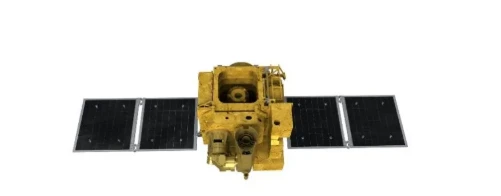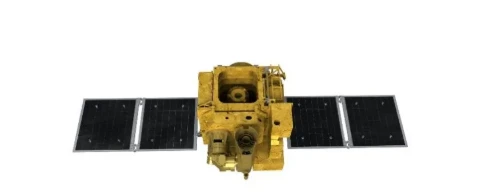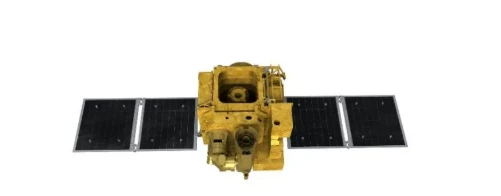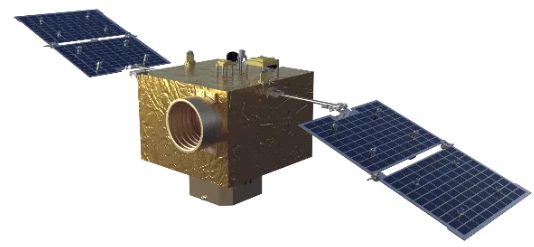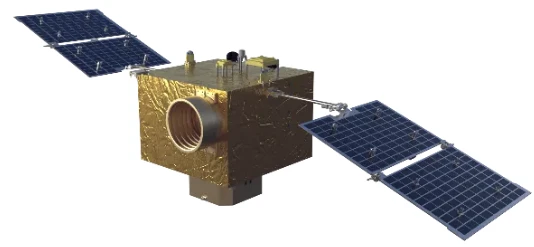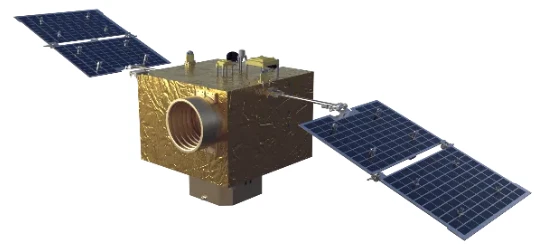
- Afirika
- Ede Albania
- Amharic
- Larubawa
- Ara Armenia
- Azerbaijan
- Basque
- Belarusian
- Ede Bengali
- Ede Bosnia
- Bulgarian
- Catalan
- Cebuano
- China
- Corsican
- Ede Croatian
- Czech
- Danish
- Dutch
- English
- Esperanto
- Estonia
- Finnish
- Faranse
- Frisia
- Galician
- Georgian
- Jẹmánì
- Giriki
- Gujarati
- Haitian Creole
- Hausa
- ara ilu Hawaiani
- Heberu
- Rara
- Miao
- Ede Hungarian
- Icelandic
- igbo
- Ede Indonesian
- Irish
- Itali
- Japanese
- Javanese
- Kannada
- Kasakh
- Khmer
- Ede Rwandan
- Korean
- Kurdish
- Kirgisi
- Iṣẹ-ṣiṣe
- Latin
- Latvia
- Lithuania
- Luxembourgish
- Macedonian
- Malagasy
- Malay
- Malayalam
- Èdè Malta
- Maori
- Marathi
- Mongolian
- Mianma
- Nepali
- Norwegian
- Norwegian
- Occitan
- Pashto
- Persian
- Polish
- Portuguese
- Punjabi
- Romanian
- Russian
- Samoan
- Scotland Gaelic
- Ede Serbia
- English
- Shona
- Sindhi
- Sinhala
- Slovakia
- Slovenia
- Somali
- Sipeeni
- Ede Sundan
- Swahili
- Swedish
- Tagalog
- Tajik
- Tamil
- Tatar
- Telugu
- Thai
- Tọki
- Turkmen
- Ukrainian
- Urdu
- Uighur
- Uzbekisi
- Vietnamese
- Welsh
- Egba Mi O
- Yiddish
- Yoruba
- Zulu
Unlocking the Power of Multispectral Imaging
In today’s rapidly evolving technological landscape, the need for advanced imaging solutions has never been greater. Among the most innovative breakthroughs in imaging technology is the multispectral kamẹra. These devices offer a new way to capture data that is essential in various fields, from agriculture to environmental monitoring and beyond. Whether you're looking for a multispectral imaging camera for research purposes or a low cost multispectral camera for routine applications, the possibilities are endless.
This article delves into the potential of multispectral cameras, their benefits, and why investing in one might be the perfect decision for your business or project.
What is a Multispectral Camera?
A multispectral kamẹra captures image data at different wavelengths of light, often beyond the visible spectrum, including infrared and ultraviolet. This is far more advanced than traditional cameras, which only capture visible light. By collecting data from multiple spectrums, multispectral cameras allow users to gain more insights into the composition of objects, vegetation health, water quality, and even soil conditions.
The ability to see beyond the visible spectrum is what makes multispectral cameras so powerful. For instance, they are widely used in remote sensing applications to monitor and assess agricultural fields, forestry, and environmental impacts. They provide valuable data that can be analyzed to make more informed decisions regarding land use, crop management, and ecological studies.
With the evolution of these cameras, industries that were once limited in their capacity to capture detailed images can now do so with greater precision and efficiency. As such, the multispectral kamẹra is becoming an indispensable tool in both scientific and commercial sectors.
Multispectral Imaging Camera: Revolutionizing Data Capture
The advent of the multispectral imaging camera has completely transformed industries such as precision agriculture, environmental monitoring, and even disaster management. These cameras capture more than just visual images; they gather a wide range of spectral information, allowing experts to study various environmental factors with unprecedented detail.
For example, in agriculture, multispectral imaging cameras can help farmers monitor crop health by analyzing the plant’s chlorophyll content, water stress levels, and overall vitality. This enables early detection of diseases, pests, or nutrient deficiencies. As a result, farmers can apply the necessary interventions at an optimal time, leading to improved crop yields and more sustainable farming practices.
In environmental monitoring, multispectral imaging cameras are used to track changes in forests, bodies of water, and land use. They can also be deployed for climate change studies, providing data on temperature variations, vegetation changes, and the effects of human activities on ecosystems. By using these cameras, experts can detect environmental shifts that may be invisible to the naked eye but have significant long-term effects.
Low Cost Multispectral Camera: Making Technology Accessible
While multispectral cameras have traditionally been seen as high-end, expensive equipment, the introduction of low cost multispectral cameras is making this technology more accessible to a wider range of users. These budget-friendly options are designed to meet the needs of small businesses, startups, and educational institutions, offering essential features without breaking the bank.
Thanks to advancements in technology, the price of low cost multispectral cameras has dropped significantly in recent years. This price reduction is opening doors to new markets and applications. For example, small-scale farmers who previously couldn't afford such technology can now monitor their crops and make data-driven decisions to improve productivity. Researchers in developing countries are also benefitting from these affordable alternatives, enabling them to collect valuable data without facing financial barriers.
Despite their lower price point, low cost multispectral cameras still offer many of the features found in their more expensive counterparts. These include multi-spectral imaging capabilities, high-resolution imaging, and the ability to gather data from a variety of wavelengths. As such, they provide a cost-effective solution for industries that need access to advanced imaging technology without the high costs.
Multispectral Camera Buy: Choosing the Right Option
When it comes time to ra a multispectral kamẹra, the market offers a variety of options to consider. The ideal choice for you will depend on your specific needs, application, and budget. Whether you’re a farmer looking to monitor crop health or a researcher gathering data for environmental analysis, choosing the right camera is crucial for ensuring accuracy and reliability in your work.
When shopping for a multispectral kamẹra, there are several factors to keep in mind. First, consider the camera’s spectral range. Some cameras may focus on just a few wavelengths, while others can cover a broader range of the electromagnetic spectrum. Second, look at the camera’s resolution. Higher resolution cameras will capture finer details, which may be essential depending on your application. Finally, assess the camera’s integration capabilities. Many multispectral cameras come with software that allows you to analyze and visualize the data captured by the camera, which is vital for making informed decisions.
By understanding your needs and comparing different models, you can make a more informed decision when it comes time to ra a multispectral kamẹra.
Why Invest in a Multispectral Camera for Your Business or Project?
Idoko-owo ni a multispectral kamẹra can provide significant benefits to a wide range of industries. Here’s why it’s a smart choice for anyone in need of advanced imaging technology:
Increased Efficiency: A multispectral kamẹra provides a faster and more accurate way to collect data. Whether in agriculture, forestry, or environmental monitoring, the ability to capture a wide range of data in one pass reduces the need for time-consuming manual data collection.
Improved Decision-Making: The data provided by multispectral cameras allows businesses and organizations to make more informed decisions. Whether you’re deciding when to apply fertilizers, how to manage forest resources, or where to focus conservation efforts, the insights gained through multispectral imaging are invaluable.
Cost Savings: Though the initial investment in a multispectral kamẹra may seem steep, the technology often pays for itself over time by improving productivity and efficiency. For example, farmers can use the data to reduce the use of pesticides and fertilizers, which leads to savings in both time and money.
Scalability: As technology continues to improve, multispectral cameras are becoming more accessible for small businesses, startups, and educational institutions. With affordable options available, it’s easier than ever to access this powerful technology without breaking the budget.
Versatility: Multispectral cameras can be used for a wide range of applications, from monitoring crops and forests to analyzing water bodies and urban areas. This makes them valuable tools across various industries, from agriculture to environmental science and beyond.
FAQs About Multispectral Cameras
What is a multispectral camera used for?
A multispectral kamẹra captures image data across multiple wavelengths of light, providing insights into things like vegetation health, water quality, and environmental changes. It's commonly used in agriculture, environmental monitoring, and scientific research.
How does a multispectral imaging camera work?
A multispectral imaging camera uses multiple sensors to capture images in different wavelengths, such as visible light, infrared, and ultraviolet. This allows the camera to gather more data than a standard camera, providing detailed insights into various materials and conditions.
Can I find a low cost multispectral camera?
Yes, many companies now offer low cost multispectral cameras that provide essential imaging capabilities at a more affordable price. These cameras are ideal for smaller operations, educational institutions, and cost-conscious researchers.
How do I buy a multispectral camera?
You can ra a multispectral kamẹra from a variety of retailers, both online and in physical stores. Be sure to compare features and prices to choose the camera that best fits your needs and budget.
What industries use multispectral cameras?
Multispectral cameras are used in agriculture, environmental monitoring, forestry, geology, and even disaster management. They are versatile tools that can assist in a wide range of fields by providing critical data for analysis.
Whether you're a researcher, farmer, or environmental scientist, a multispectral kamẹra offers unparalleled insight into the world around you. From its ability to capture detailed images across a range of wavelengths to its accessibility through low cost multispectral cameras, this technology is revolutionizing industries worldwide.
If you’re looking to ra a multispectral kamẹra, don’t wait. Explore our selection of top-quality cameras that fit every budget and requirement. Visit our website today to find the perfect model for your needs, and take the next step toward unlocking the power of multispectral imaging.






